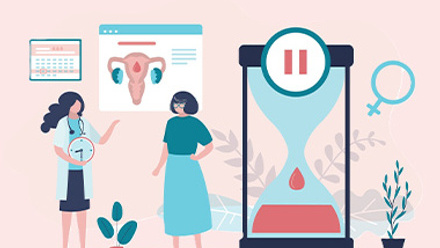Employers which adopt a culture of curiosity could improve their joined-up strategy

The future of work and wellbeing is already here. In this brave new world of the workplace, leaders and HR professionals function simultaneously as analysts, facilitators, coaches, guides, and container builders. This makes them the people who will create real spaces for employees to CO-CREATE cultures of trust, courage, belonging and wellbeing: cultures where individuals can flourish, and companies thrive.
Successful wellbeing
Companies who have succeeded at fostering a healthy, prospering culture are increasingly sharing their wisdom on how they cultivated this environment. It turns out that the actual reality of this process is not quite what we thought. As it turns out, “fit” employees don’t create a happier and healthy organisation - it is actually a healthy, happy workplace that fosters the right culture of motivated employees. The onus is on the company to enact these changes, not simply its staff.
So how did they do it? What most of those organisations have in common is adopting a culture of curiosity, and human-centred, design led thinking – and, in doing so, looking at engagement and wellbeing in a whole new way.
Design thinking
If you are not familiar with design thinking, it is a process and a way of thinking about tough-to-solve problems. Design thinking draws upon empathy, logic, imagination, intuition and an iterative approach to explore possibilities of what could be — and to create desired outcomes that benefit the user.. In 2016, Deloitte’s Human Capital Trends survey found that respondents at companies where HR delivers the highest levels of value are almost five times more likely to be using design thinking to design programs than their peers.
Design thinking requires you to leverage the following key elements:
- Curiosity
- Bias to Action
- Reframing
- Awareness
- Radical Collaboration
When combined with employee experience journey mapping, this approach can truly revolutionise a culture and wellbeing strategy - as well as the investments a company chooses to adopt or refine. Investing in ‘curiosity’ and asking different questions ensured success for the ones that dared to wonder about different approaches, and take action on them.
Employee experience
Investing in understanding the Employee Experience Journey Mapping (EXJM) is a visual thinking tool used to analyse and improve the employee experience when it comes to culture and wellbeing. The idea behind EXJM is simple: you look at the journey employees take throughout their day at the organisation and break it down into stages. Then you look at each stage from different angles to develop the complete picture of what the experience of the employee may look like and how employees feel along the way. It allows you discover and map individuals who are thriving: and, conversely, those who may be headed to a burn-out. From there you can celebrate the high points of your organisation and its staff - and work to rectify the low points.
EXJM is a game changer when it comes to understanding what wellbeing offerings work, and what is actually needed. The further advantage of EXJM is that it also exposes the high and low points an employer has, around the six pillars of psychological Well-Being which must be present in order for an individual to thrive: self-acceptance, autonomy, purpose, connection, growth and development, and integration.
So, in short: be more like Newton, and allow your innate curiosity a chance to thrive. Research design led thinking, or call in someone who specialises in wellbeing and a culture of human-centric design. Either way, every time you look at things differently, it will always pays off.
This article is provided by Elevated Living Wellness.
Supplied by REBA Associate Member, Levell
A 360C wellbeing@work company, from strategy advisory&implementation to digital wellbeing platform.







